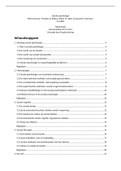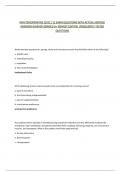Summary
Summary Neurology disease profile flashcards
- Module
- Neurology Conditions
- Institution
- University Of East Anglia
File containing summary disease profiles of neurological conditions that can be made into flashcards. It contains the Pathophysiology, presentation, investigation, and management of each condition.
[Show more]






